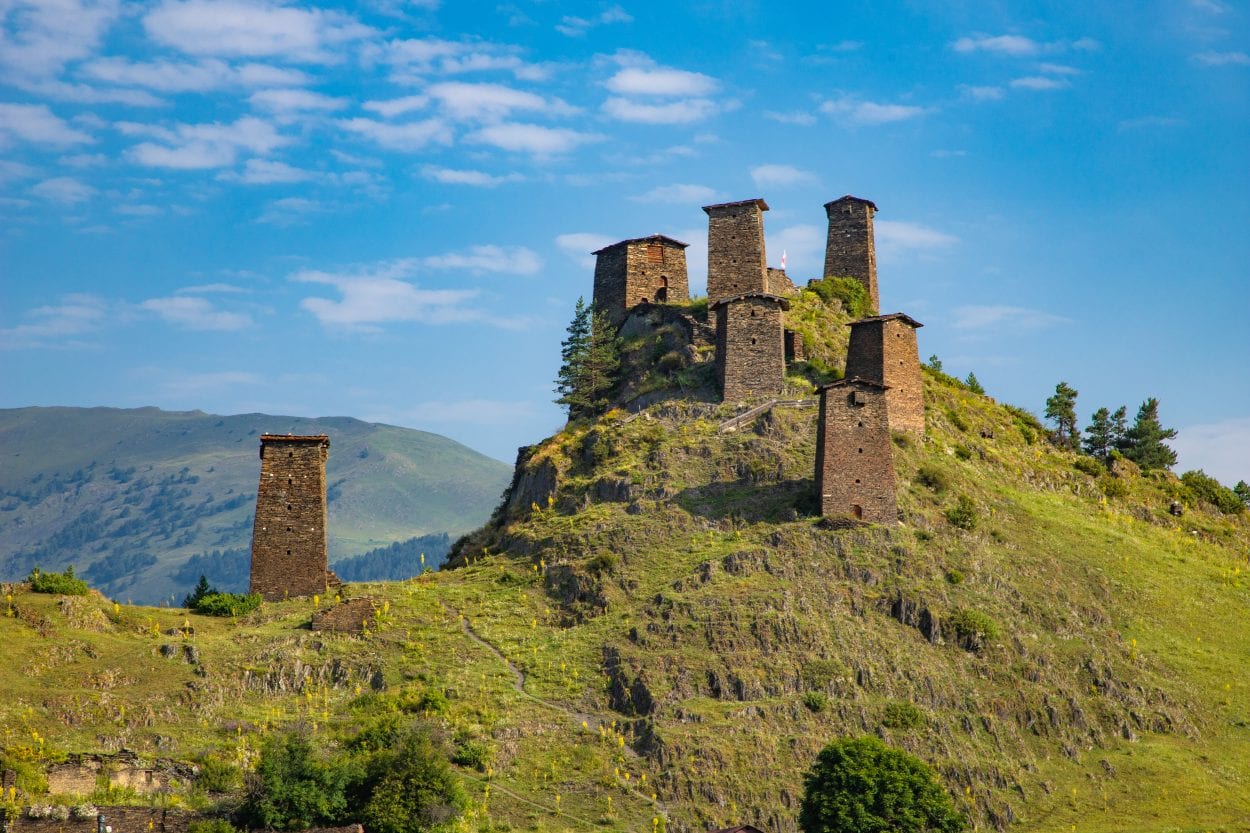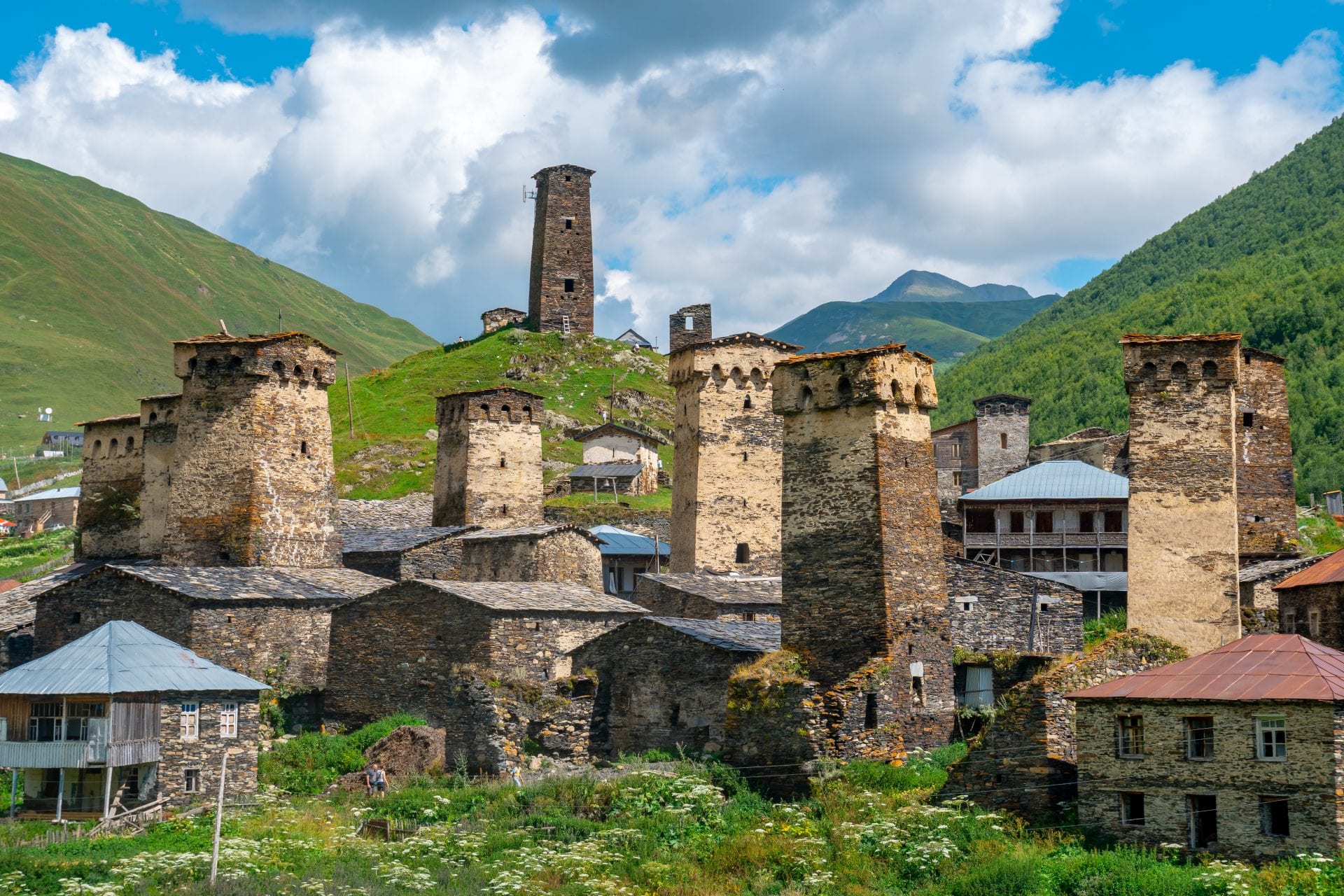The Svan towers are fortified dwellings in the historical region of Svaneti, part of the province of Ushguli in Georgia.
Ushguli is a Svanetian province comprised of four Svan settlements: Chvibiani, Zhibiani, Chazhashi and Murkmeli, that is situated in the Caucasus mountains range along Georgia’s northern border.
The Svan are an ethnic subgroup of indigenous Georgians who speak the Svan language, an unwritten language standard that has retained many archaic features from other Kartvelian languages dating as far back as 1900BC.
The Svan live by ancient tribal traditions developed from a medieval feudal system using blood revenge (litsvri), a custom of avenging a grave insult by killing either the offender or their male relative, or in which the family members of a person killed seek revenge against the family of the killer, creating a cycle of death that can last for generations.
The Svan constructed hundreds of fortified tower dwellings called Koshi or koshki, that served to protect family groups from marauding invaders, or during times of neighbouring blood feuds. The earliest towers date from the 8th or 9th century AD, with the most recent being constructed as late as the 18th century.

Towers have three to five floors with a tapering profile, reaching heights of up to 25 metres capped by an upper crown and embrasures for defence. The entrance is generally several metres above the ground, accessed with a ladder or staircase that could be removed in the event of an attack.
Attached to many towers is a two-storey house called a machubi, that served as the main dwelling for families and their domestic animals. Sometimes families consisted of up to thirty or even a hundred members, living in huge residential compounds containing several towers and machubi that resemble medieval fortresses of Europe.
With the incorporation of Georgia into the Soviet Union, the practice of blood revenge was relatively uncommon, and in more recent years the tradition has been declining as law enforcement takes hold in the region.
Header Image Credit : k_samurkas – Shutterstock





